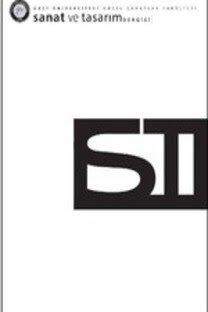Sergey Rahmaninov’un Çeşitli Piyano Yapıtlarında Dies Irae Motifinin İncelenmesi
Sergey Rahmaninov, Dies Irae, Rus Besteciler
An Analysis Of The Dies Irae Motif In Various Piano Works By Sergei Rachmaninoff
Sergei Rachmaninoff, Dies Irae, Russian Composers,
___
- Chase, R. (2003). Dies Irae A Guide to Requiem Music. (1. Baskı). Maryland: Scarecrow Press.
- Haupt, P. (1919). The Prototype of The Dies Irae. The Society of Biblical Literature, 38 (3/4), 142-151.
- Gitz. R. J. (1990). A Study of Musical and Extra-Musical Imagery in Rachmaninoff ’s “Etudes-Tableaux”, Opus. 39. Yayımlanmamış Doktora Tezi. Loisiana: Louisiana State University.
- Glover, A. (2003). An Annotated Catalogue of the Major Piano Works of Sergei Rachmaninoff. Yayımlanmamış Doktora Tezi. Florida, Florida State University.
- Norris, G. (1994). Master Musicians: Rachmaninoff, (2. Baskı). Oxford: Oxford University Press.
- Plaskin, G. (1983). Horowitz: A Biography of Vladimir Horowitz. (1. Baskı). New York: William Morrow and Company.
- Radiushina, M. (2008). A Performer’s Perspective on Technical Challenges And Interpretive Aspects of Sergei Rachmaninoff ’s Etude-Tableaux Op.39. Yayımlanmamış Doktora Tezi. Miami: University of Miami.
- Woodard, S. J. (1984) The Dies Irae As Used By Sergei Rachmaninoff: Some Sources, Anectecendents, And Applications. Yayımlanmamış Doktora Tezi. The Ohio State University.
- Yoshikawa, M. C. (2004). Rachmaninoff ’s Intergrative Technique and Structural Organization: A Schenkerian Analysis of Allegro Moderato, from Piano Sonata No.1 in D Minor, Opus 28. Yayımlanmamış Doktora Tezi. Arizona: Arizona State University.
- ISSN: 1308-2264
- Yayın Aralığı: 2
- Başlangıç: 2015
- Yayıncı: Ankara Hacı Bayram Veli Üniversitesi
Montessori Okullarında Mekânı Kavramlarla Okumak
Sümeyye Aybike TÜRK, Reyhan MİDİLLİ SARI
Mimarlık ve Metinlerarasılık: Kasımpaşa Tuz Ambarı'nda Metinlerarası İzler
Serap FAİZ BÜYÜKÇAM, Tülay ZORLU
Sergey Rahmaninov’un Çeşitli Piyano Yapıtlarında Dies Irae Motifinin İncelenmesi
Hat Sanatında Müselsel Yazılar
Peter Kogler'ın Dijital Mekânları
Şarkı Sözü Yazarlığına Mizahi Yaklaşım: Soner Günday Üzerine Bir İnceleme
Müzik Eğitiminin Çeşitli Boyutlarda Çocuk Gelişimine Olan Etkileri
Moda Tasarımında Döngüsel Ekonomi Kavramı Ve Farklı Tasarım Seviyelerinde Benimsenen Stratejiler
